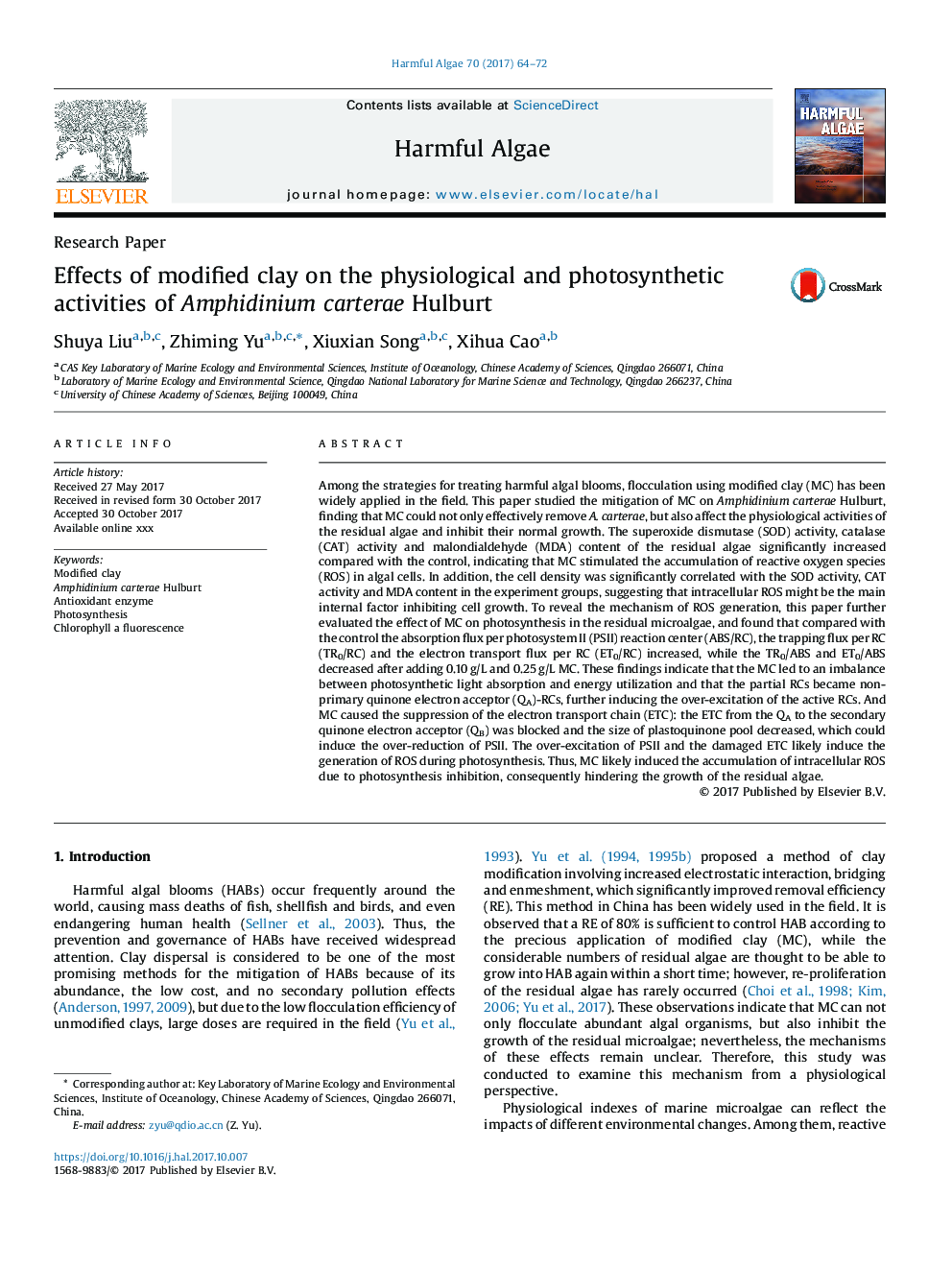| کد مقاله | کد نشریه | سال انتشار | مقاله انگلیسی | نسخه تمام متن |
|---|---|---|---|---|
| 8885736 | 1626902 | 2017 | 9 صفحه PDF | دانلود رایگان |
عنوان انگلیسی مقاله ISI
Effects of modified clay on the physiological and photosynthetic activities of Amphidinium carterae Hulburt
دانلود مقاله + سفارش ترجمه
دانلود مقاله ISI انگلیسی
رایگان برای ایرانیان
کلمات کلیدی
موضوعات مرتبط
علوم زیستی و بیوفناوری
علوم کشاورزی و بیولوژیک
علوم آبزیان
پیش نمایش صفحه اول مقاله

چکیده انگلیسی
Among the strategies for treating harmful algal blooms, flocculation using modified clay (MC) has been widely applied in the field. This paper studied the mitigation of MC on Amphidinium carterae Hulburt, finding that MC could not only effectively remove A. carterae, but also affect the physiological activities of the residual algae and inhibit their normal growth. The superoxide dismutase (SOD) activity, catalase (CAT) activity and malondialdehyde (MDA) content of the residual algae significantly increased compared with the control, indicating that MC stimulated the accumulation of reactive oxygen species (ROS) in algal cells. In addition, the cell density was significantly correlated with the SOD activity, CAT activity and MDA content in the experiment groups, suggesting that intracellular ROS might be the main internal factor inhibiting cell growth. To reveal the mechanism of ROS generation, this paper further evaluated the effect of MC on photosynthesis in the residual microalgae, and found that compared with the control the absorption flux per photosystem II (PSII) reaction center (ABS/RC), the trapping flux per RC (TR0/RC) and the electron transport flux per RC (ET0/RC) increased, while the TR0/ABS and ET0/ABS decreased after adding 0.10Â g/L and 0.25Â g/L MC. These findings indicate that the MC led to an imbalance between photosynthetic light absorption and energy utilization and that the partial RCs became non-primary quinone electron acceptor (QA)-RCs, further inducing the over-excitation of the active RCs. And MC caused the suppression of the electron transport chain (ETC): the ETC from the QA to the secondary quinone electron acceptor (QB) was blocked and the size of plastoquinone pool decreased, which could induce the over-reduction of PSII. The over-excitation of PSII and the damaged ETC likely induce the generation of ROS during photosynthesis. Thus, MC likely induced the accumulation of intracellular ROS due to photosynthesis inhibition, consequently hindering the growth of the residual algae.
ناشر
Database: Elsevier - ScienceDirect (ساینس دایرکت)
Journal: Harmful Algae - Volume 70, December 2017, Pages 64-72
Journal: Harmful Algae - Volume 70, December 2017, Pages 64-72
نویسندگان
Shuya Liu, Zhiming Yu, Xiuxian Song, Xihua Cao,